The car you see in these colour images is a fully restored 1958 Toyopet Crown – a significant model in Toyota history. Not only was it Toyota’s first full-scale passenger vehicle, it was the first Japanese car to be exported to and sold in the mainland United States.
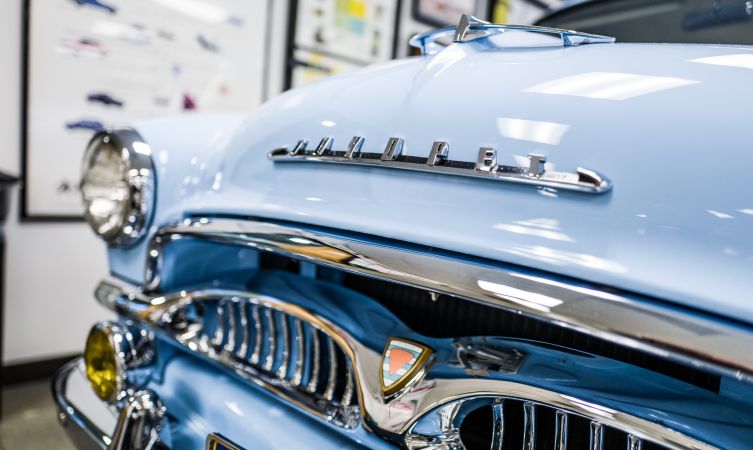
But while the model was successful in Japan, it was not so well received in America. In this post we will explain why that was the case, but also how it was instrumental in helping Toyota re-evaluate its approach to export markets.

Toyota begins to think global
In the early 1950s, Toyota began to recognise the need to expand its passenger car business outside of Japan. Preliminary research of the immense US market revealed that returning members of the armed forces were moving to the suburbs and starting families, creating a specific need for smaller second cars.
By 1955, it was noted that almost 100,000 compact cars were darting between the tail-finned land yachts on US roads. Sales of these vehicles were doubling every year, and virtually all of them were European models. So the market potential – and upward sales trajectory – was clear.

Emboldened by how well the rugged Land Cruiser was being received in newly established export markets, Toyota reckoned it could create a sales success in the States with a model to take on the best-selling Volkswagen Beetle. Indeed, Toyota executives believed the very car for the job (above) had just gone on sale in Japan.
Toyopet Crown: an all-Japan success story
Work on the new Crown model – successor to the low-volume Toyopet SA, SC, SD and SF – began in 1952 and was Toyota’s first full-scale passenger vehicle. It was also unique for being developed under a programme led by engineers rather than designers.
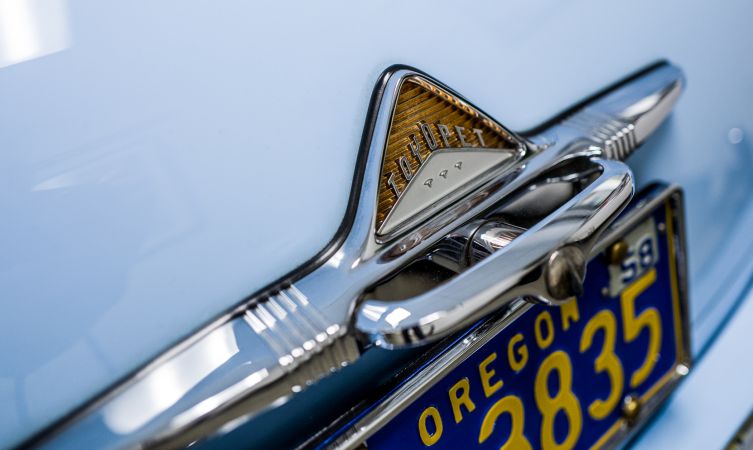
Unaware of its yet-to-be-determined future as Toyota’s world ambassador, chief engineer Kenya Nakamura developed a car tailored to meet the prevailing needs and road conditions of the domestic market.
Toyota executives initially opposed Nakamura’s proposal to apply new chassis technologies that had not yet been specifically proven on Japanese roads. Nevertheless, Nakamura persisted in his efforts and his advanced suspension system was eventually approved. It consisted of independent double wishbones and coil springs up front, paired with three semi-oval leaf springs at the rear.

Production of the Toyopet Crown began on 1 January 1955. The model was well received on the domestic market, being praised as a complete Japanese-made car well suited to local driving environments. Two years later, its mechanical endurance was conclusively proved in motorsport.
Toyopet Crown: American dream?
In August 1957, Toyota sent three ambassadors to Los Angeles to survey the US market. They arrived ahead of the first two Crown models, which docked in California on 25 August (see below). In compliance with local law, headlights and other safety features suitable for this left-hand drive market were fitted after arrival. Two months later, on 31 October 1957, Toyota Motor Sales (TMS) was established in a former Rambler dealership in Hollywood.
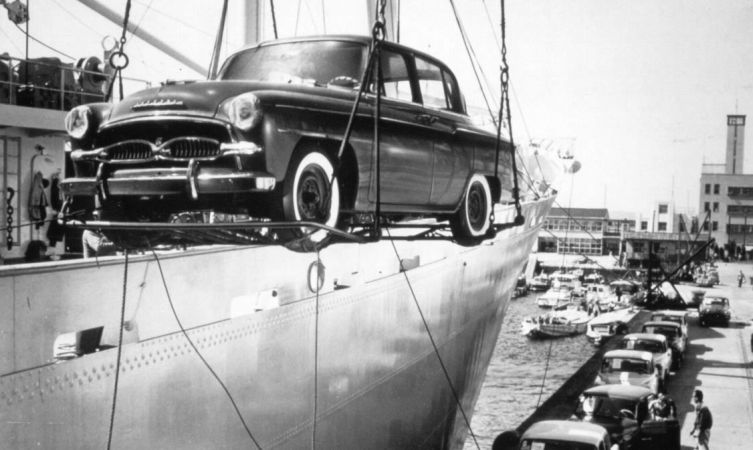
While this California city is famous for making some dreams come true, it is also known for shattering others. Indeed, the first clue that the Toyopet Crown wasn’t ideally suited to the US market came from within the company itself. Recently appointed Toyota sales administrator James McGraw wasn’t impressed, commenting: “This thing is underpowered, overpriced and it won’t sell.”
Brutal words, perhaps, but McGraw also had a point. While the Crown was purpose-built for Japan’s poor quality road network, it struggled to keep pace on America’s smooth, fast-flowing blacktop. When it eventually got to 60mph – a speed that was rare in Japan – the car apparently shuddered so much the driver couldn’t see out of the rear-view mirror.
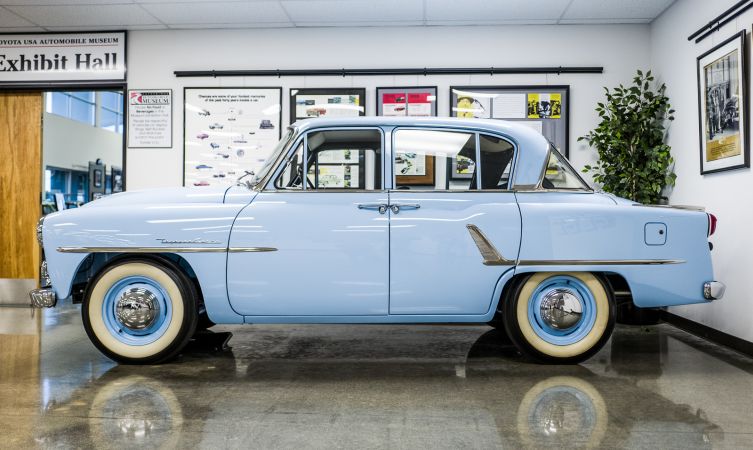
Other issues the original development team couldn’t have foreseen also came to light in the car’s first few weeks on American soil. To English-speaking ears the Toyopet brand name was divisive as it contained the nouns ‘toy’ and ‘pet’ – both of which many felt had unsuitable connotations for a serious vehicle in a discerning market.
On a more practical level, the first TMS associate, Paul Ozawa, discovered that the Crown couldn’t be taken to drive-in restaurants. Because when the serving staff hung the tray on the steering wheel it pushed the bezel and activated the horn.
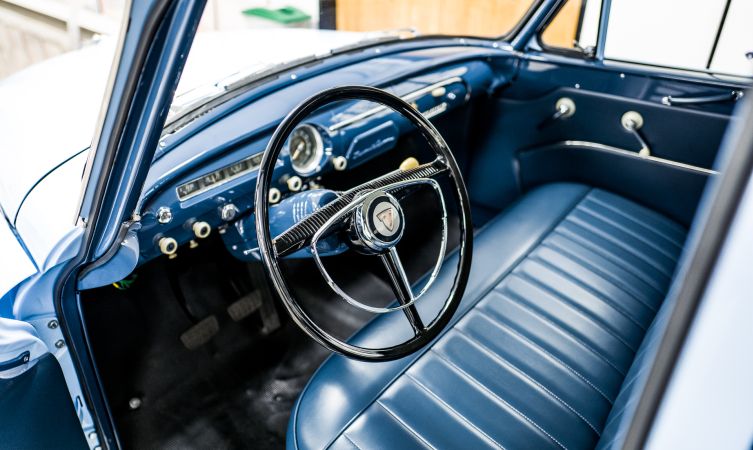
Following its receipt of a California retail license (11 December 1957) and the formation of a small distribution network (4 February 1958), TMS officially launched the Toyopet Crown through five Toyota dealerships in July 1958. The cost of the car was $1,999 – a figure that represented 67 per cent of the average American’s annual wage.

By the end of 1958 a total of 287 cars (plus a single Land Cruiser) had been sold. While sales more than tripled the following year, the decade ended on a down note. In 1960, Toyota stopped exporting the Toyopet Crown to the United States until it could develop a more suitable vehicle for this market.
Toyota returned to the US passenger car market in June 1965 with the advanced new Corona (seen below on left next to updated 1959-60 Crown Custom), which was a runaway success from the outset. Toyota had learned to adapt the product to the market and focus on the customer – qualities that it continues to this day.

Toyopet Crown: Was it good or bad?
Original US-registered Toyopet Crown models are now extremely rare and highly collectible, while its inability to keep pace with traffic or silently support a tray of food has long since been forgotten. The beautiful 1958 example in our photos has returned to the possession of its maker and now stands as a prize exhibit at the Toyota USA Automobile Museum.

In many respects, the Toyopet Crown was an outstanding vehicle. Its well-appointed interior included luxuries such as two-speed windscreen wipers, deep-pleated vinyl upholstery and hardwearing floor covering throughout; even an electric outlet so the driver could have a shave on the move – a suggestion made in the original brochure.
Though categorised as compact from the perspective of American consumers, the Crown offered enough hip, knee and head room for six adults in their Sunday best… with hats on!
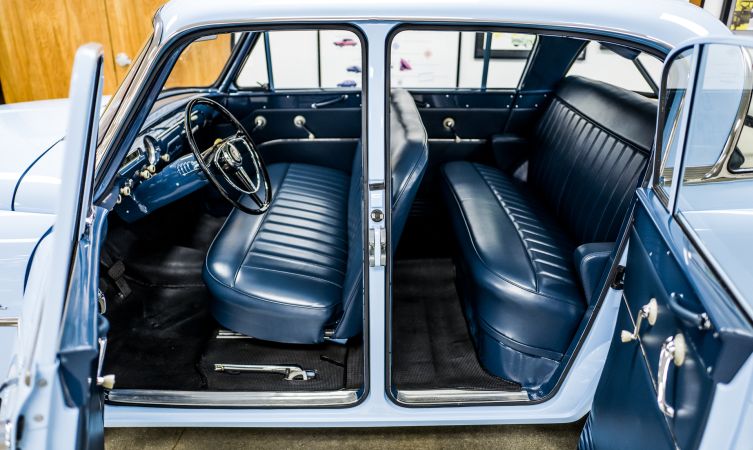
But on a more fundamental level, few other cars of its age or price point so skilfully blended traditional craftsmanship, modern automation techniques and quality control procedures.
For instance, its bodywork benefited from a nine-coat paint process, each layer being wet-sanded by hand to achieve an optimal finish. With this in mind, the fuel filler cap was made of plastic and attached to the car with a nylon cord so that it wouldn’t scratch the paintwork or get accidentally mislaid.

In the automobile market of the 1950s, greater weight was seen as a protection and an indicator of smoother ride comfort. So the Crown’s double-skinned body construction and rugged box frame chassis gave it a 225kg ‘advantage’ over the class average. It also sounded more solid than domestic vehicles when you closed the door.
Its 1.5-litre engine may not have been particularly powerful compared to an American V8 but it offered up to 33mpg and was specifically designed for easy maintenance. Components such as the cooling and filtration systems were also oversized for increased reliability and efficiency.
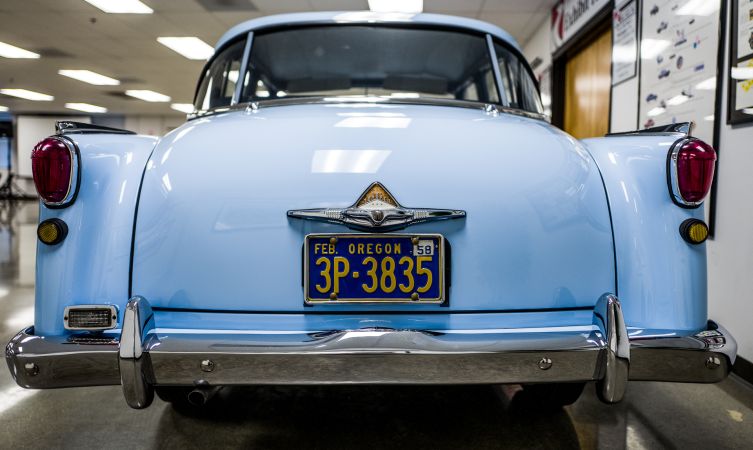
Thoughtful as these alterations might have appeared, they were not enough to secure the first-generation Crown a position in the hearts of the US car-buying public. That honour would go to later models such as the Corona, Corolla and Camry.
The second-generation Crown began production in October 1962 in Japan, and although the model did return to the US market it was finally withdrawn from sale in 1971. However, in Japan, the much-loved Toyota Crown is now in its 14th generation and has recently celebrated its 60th anniversary.
Learn more: History of the Toyota Crown
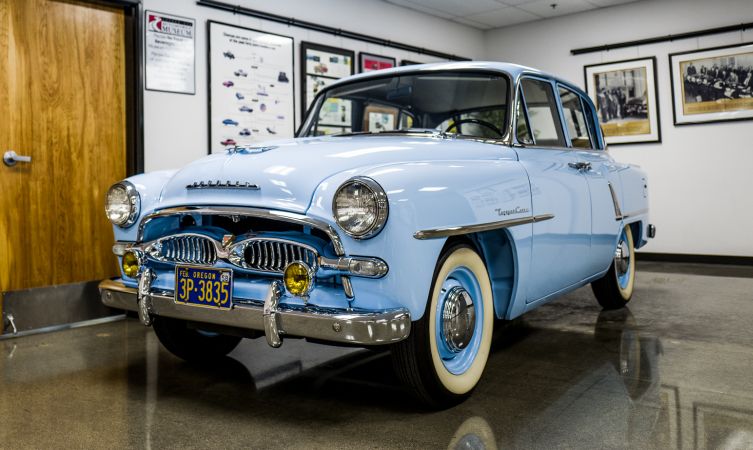


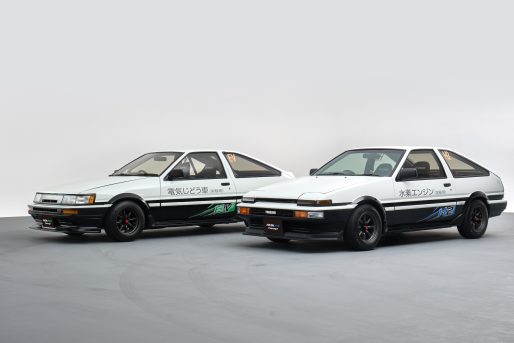
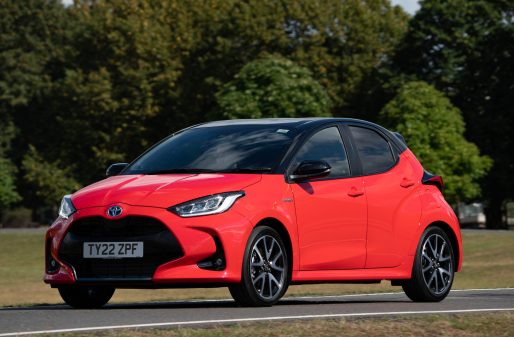
I have the history of the blue Toyopet Crown Deluxe that is shown above. An employee of Toyota in Portland, Oregon found the vehicle sitting in a field in central Washington State. It was a very sad field car, left to rot. It had broken windows, a smashed fender and a couple of bullet holes. The Toyopet was purchased from the land owner and hauled back to the facility in Portland. We tracked down the previous owner who said that the car originally was sold in Kansas City, Missouri and made its way to San Diego, California where it was then driven to Lyle, Washington. The family drove it for many years and their children learned to drive in it.
The Toyopet was restored in Portland at a restoration shop however, a Toyota employee did all of the paint work. Every part was restored down to the last nut and bolt. Before going to the Toyota headquarters, it resided in the lobby at the Portland facility. The Toyopet was driven in a local parade and shown at several car shows in the area. I have personally driven the car and yes, it is under-powered but solid as a rock.
Hi Douglas,
Thanks for getting in touch with us. Wow, that’s amazing!
How does it feel to have driven a piece of history?
Have you owned any Toyotas since taking part in the restoration of this one?
Thanks.
I got the do the first official drive when it came back from the restoration shop. It was a real thrill. I was in charge of the restoration project. I was a Toyota team member at our port processing facility for 29 years. I had previously been a body/paint professional and had taught Auto Body repair at a local community college. When we started the restoration in 2002, the internet was not what it is today so I also made a lot of phone calls to find parts. We actually found another 1958 Toyopet for parts (it then went on to help with another restoration). I found a new in the box engine gasket set, 5 hub caps, fog lights, new stock bearings, tune up parts and so on. Many parts had to be hand made like the left tail fin (the tail fins and all of the side moldings are stainless steel). All of the under hood decals were reproduced. The most fun part was the gold plated crown emblem on the glove box. It was missing but there was a great shadow left under where it was mounted. The challenge was that I could not find any clear photos of the emblem and just had an illustration and the shadow to work with. We worked with a jeweler who made a wax model and then cast a Sterling silver emblem which was then gold plated. The rear window was in good shape and the side glass was all flat so were therefor easy to made. The greatest challenge was replacing the broken windshield. The restoration shop made a stainless steel form and used a local glass artist who had a large enough furnace to soften the glass over the form. Thank you for posting the article about this humble little car that started something big.
Hi Douglas,
Thank you so much for your reply and for sharing these details with us!
It’s great to hear such a personal story relating to one of our blog posts and how much hard work went into its restoration.
Have you managed to see the car again since?
Thanks.
Douglas,
Do you happen to have images of this restoration process? Anywhere online? It would be neat to see the progress.
Probably should have included the history of these Toyo’s in the Mobilgas trials in Australia…..This rally really was the introduction to export Toyotas into the world market…..Wasn’t this to test the cars for the American market ?
Hi Damien,
Thanks for getting in touch with us. It sounds like you know your stuff when it comes to the Toyopet Crown!
We can only capture a small part of the history in these blog articles and base our content predominantly in relation to the UK market.
It might be worth getting in touch with Toyota Australia to check those details.
You can find their website, here: https://www.toyota.com.au/
Thanks.
Informative post! This is a great share thank you
Culturally, you might be interested to learn that the Toyopet features in Akira Kurosawa’s magnificent crime thriller “High and Low” (“Heaven and Hell”) – 1963.
My first car was a 1960 Toyopet Crown. I was in high school loved the quirkiness. Suicide rear doors, push button ashtray, color changing speed indicator and plug in the glove box. Girls loved it and called it the “007” car. My dad wasn’t such a fan as he was the mechanic and was harassed at the auto supply store when it needed a part. Slow as a snail but solid as a rock.
Saw this car in a godzilla movie!!!! Had to research it!! I wanted one at 1:24 scale for my garden railroad, apparently very collectable in scale model also! Starting at 130 dollars and 30 shipping, I won’t be getting one. Just loved reading about this car and especially the restored one found in field, amazing! Loved the article, thanks, john..
The first time I heard a radio ad for Toyota, I thought it was a Bob and Ray type spoof on the word toy. First Toyota was in 2005 and we bought a new 2005 Corolla last month.